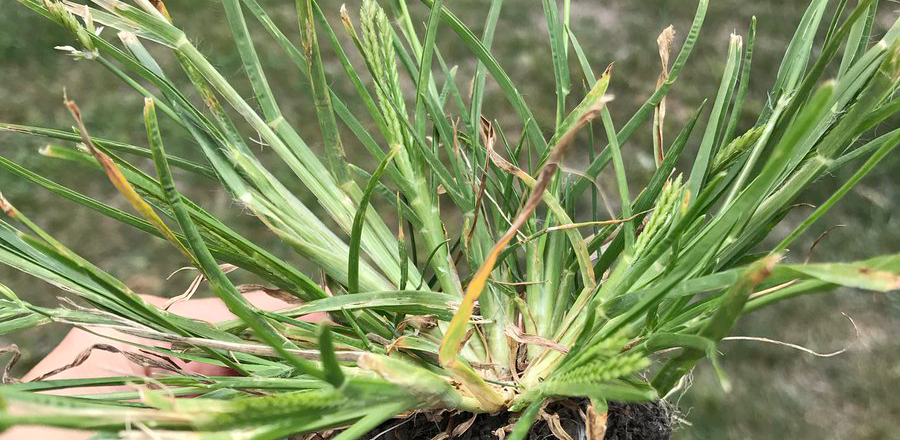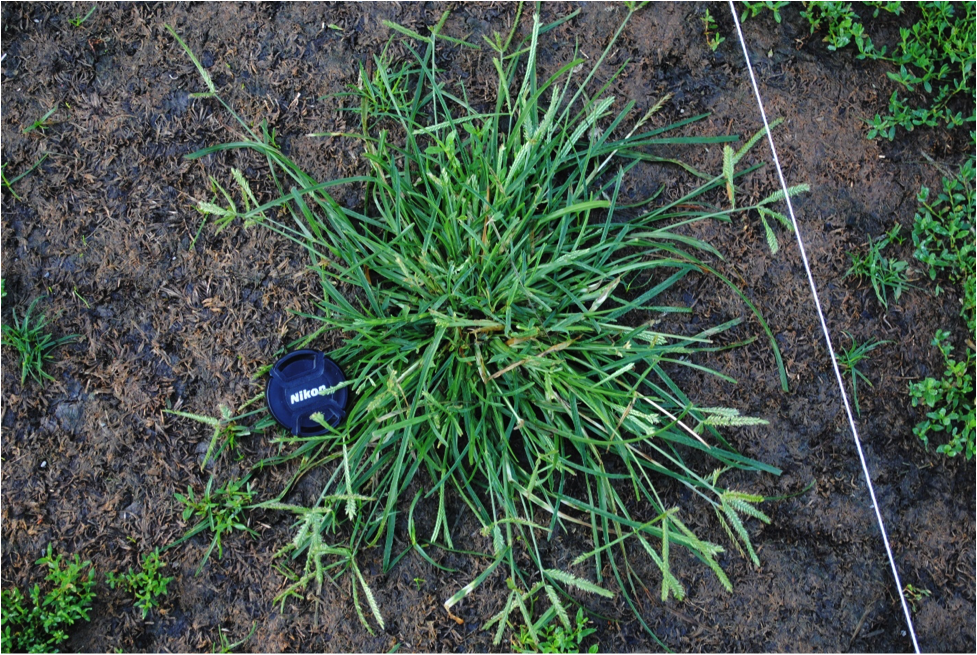Goosegrass Q&A with Bayer

We asked Zac Reicher, from Bayer’s Green Solutions Team, a few questions about goosegrass. Learn about the turf conditions that create a perfect environment for goosegrass development, what challenges we face controlling it, how to treat it, and a few other things in this Q&A.
When does goosegrass begin to show up?
Goosegrass starts germinating at soil temperatures of 60°F at 4” and will continue to germinate beyond July 4th, so long-term preemergence residual activity is required for optimum control.
What are the indicators a weed is goosegrass?
Goosegrass is also called silver crabgrass because of its silver-colored stem area. Its sheath is also flattened (compressed). Its characteristic seedhead is shaped like a zipper.
What turf conditions create a perfect environment for the development of goosegrass?
Goosegrass is most competitive in wet, saturated soils with thin turf. It primarily was considered a weed in the transition zone and farther south but is now migrating north to Indiana and the Chicago area and as far west as Omaha, NE. It is almost exclusively found in low-mowed greens tees, and fairways, and is rarely seen in roughs unless immediately adjacent to cart paths.
What challenges do we face when controlling goosegrass?
Because of its extended germination window, most preemergence herbicides don’t last long enough to provide long-term control. Additionally, goosegrass has limited susceptibility to most preemergence herbicides. Few postemergence herbicides are effective on goosegrass. Additionally, goosegrass also becomes problematic on the clean-up laps of greens height cool-season turf, and no herbicides are labeled for this site. Goosegrass resistance to various herbicides has been reported, so it is crucial to rotate modes of action when choosing herbicides.
What is the best way to control goosegrass?
The best control is with split applications of preemergence herbicides to extend control to compensate for the long window of goosegrass germination. Two of the most effective herbicides are Ronstar® and Specticle®. Ronstar Flo can be applied only to dormant warm-season turf while Ronstar on fertilizer can be applied to dormant or green warm- or cool-season turf. Apply to dry turf and then water in after application. Split applications of Ronstar are most effective. Specticle can be used only on warm-season turf, regardless if dormant or non-dormant. Specticle is extremely long-lasting so usually, one mid-spring application will suffice for goosegrass control season-long. Postemergence control of goosegrass is more difficult, but Acclaim® Extra can be used on most cool-season turf as well as zoysia. A number of herbicides can be used in warm-season turf including Tribute® Total, Sencor®, Revolver®, and others. Revolver is the only postemergence herbicide that can be used to control goosegrass (and annual bluegrass) on warm-season greens.

Zac Reicher
Bayer Green Solution Team -West Region
402-309-5007







